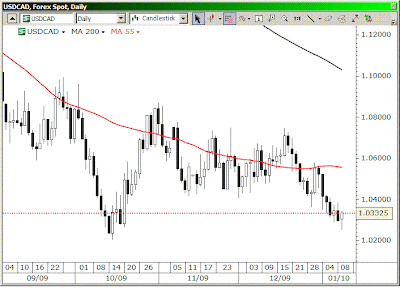The sour mood on Wall Street deepened today, despite bright spots in corporate earnings and the robust US growth and other data. Bonds rallied strongly and currencies fell into their normal swing of things in these market conditions: the USD and JPY were sharply stronger against the broader market. The turnaround in the JPY was the most pronounced development on the day after all of the positive US data failed to put a dent in the bond market. USDJPY's break higher through the previous high of the week - which was also at the weekly pivot - failed to hold and EURJPY was smashed lower again as EuroBund yields scraped close to a new six-week low.
Today's action is a very powerful signal that the market wants to ignore the good news for now and a warning bell on sentiment. The only out here for the optimists is that the action was mostly due to end of the month fixing action, a bit of a thin argument, though it could certainly have aggravated volatility somewhat.
Technical and other Developments
USD - a big confirming follow up day after the dollar index rose above the 200-day moving average in recent days. The immediate target may be something like 1.3750 in EURUSD, an old flat-line area of interest. From a Fibonacci perspective, the next big level of interest is the 1.3480 (0.618 of the huge wave from below 1.2500 to above 1.5000). The University of Michigan confidence number was higher tahn expected and the Chicago PMI was the highest since late 2005. The employment component surged to 59.8 in Jan. from 47.6 in Dec. - the first reading above 50 for the cycle.
USD - a big confirming follow up day after the dollar index rose above the 200-day moving average in recent days. The immediate target may be something like 1.3750 in EURUSD, an old flat-line area of interest. From a Fibonacci perspective, the next big level of interest is the 1.3480 (0.618 of the huge wave from below 1.2500 to above 1.5000). The University of Michigan confidence number was higher tahn expected and the Chicago PMI was the highest since late 2005. The employment component surged to 59.8 in Jan. from 47.6 in Dec. - the first reading above 50 for the cycle.
EUR - looking weak against the USD and JPY onslaught, but actually firming in this more generalized risk averse environment. This makes some sense, as the the EU was out backing up Greece implicitly, despite the headlines mostly suggesting that Greece would be left in the lurch. Spain was also out today with its own attempt to rein in spending with a "radical austerity budget" as the FT called it.
JPY - as mentioned above, a false break higher for USDJPY, though the reversal wasn't particularly large, so the immediate outlook remains ambiguous. Elsewhere, the JPY's move stronger, and it seems the currency will continue to make gains as long as investors continue to seek safety in already low-yielding government debt. JPY bulls better beware, however, as FinMin Kan was out today asking the Bank of Japan to do more to counter deflation. "We'll work together with the Bank of Japan to take a comprehensive and powerful approach to overcome deflation."
CHF - there was no official confirmation from the SNB, but today's action looks suspicious and the SNB may have been actively intervening today as EURCHF zipped higher after posting strong new lows below 1.4700 today. USDCHF slammed up through 1.0600 on the day, very firmly underlining the break of the big 1.0500 level as seen in the chart below.
GBP - broke the 1.6000 psychological barrier after 1.6080 outright support (now resistance) gave way this morning. GBPUSD support focus shifts to 1.5833 and then 1.5709, the low since June of last year.
AUD - felt serious pain on the day on the full frontal assault on risk appetite. AUDUSD confirmed the takeout of the recent support levels and the focus now switches to the 4 month low around 0.8735 and then the 200-day moving average (currently at 0.8530).
Looking ahead
Next week is a busy one and Monday is the first day of a new month. Both US ISM's and the January employment are on tap from the US. The RBA meets next Tuesday. Norges Bank meets on Wednesday and the BoE and ECB are up on Thursday. The Canadian Employment report is also up on Friday next.
Next week is a busy one and Monday is the first day of a new month. Both US ISM's and the January employment are on tap from the US. The RBA meets next Tuesday. Norges Bank meets on Wednesday and the BoE and ECB are up on Thursday. The Canadian Employment report is also up on Friday next.
Have a great weekend and be very careful out there!


















